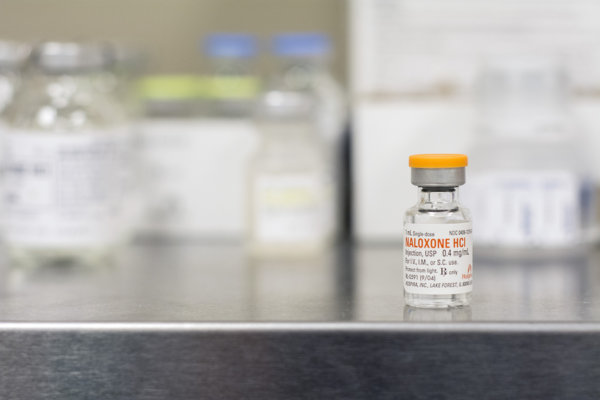
Precipitated withdrawal transpires when someone with a dependence on full agonist opioids, such as heroin, replaces it with a partial opioid agonist, such as buprenorphine. Precipitated withdrawal is characterized by rapid development.
While using a commonly prescribed drug, such as Suboxone, withdrawal symptoms appear within 1-2 hours of the first dose and usually subside within a few hours, but can last as long as one full day. Precipitated withdrawal from the use of naltrexone may onset within minutes and last up to 48 hours. Withdrawal symptoms associated with naloxone, however, are short-lived, lasting only 30 minutes to an hour, on average.
Opioid Replacement Therapy and Suboxone
Opioid replacement therapy typically uses either methadone or buprenorphine during detox and maintenance treatment programs. The goal of this treatment—also referred to as opioid substitution therapy—is to replace a full agonist opioid, such as heroin, with a longer-lasting prescription opioid with less potential for misuse.
It is vital that those suffering from an opioid addiction seek and receive professional help to overcome this condition. Suboxone, a prescription withdrawal treatment that contains the partial agonist opioid buprenorphine and the anti-overdose drug naloxone, an opioid antagonist, is one of the safest and most regularly used treatments.
This drug has helped many former addicts recover from narcotic dependence, which is almost always the first step in overcoming addiction. However, no one should ever take Suboxone or other withdrawal medications without medical direction and supervision – misuse of these drugs can lead to a condition known as precipitated withdrawal, which is highly unpleasant and can contribute to relapse.
Symptoms of Opioid Withdrawal
People who have developed a physiological dependence on opioids for an extended period, even if taken as directed, will experience withdrawal symptoms upon discontinuation. This problem, however, can be lessened using opioid replacement therapies such as buprenorphine to reduce withdrawal symptoms.
Also, the person may be weaned from the original opioid using a tapering schedule until the body is no longer physically dependent upon it. Moreover, if the person quits using the drug abruptly, they are more likely to encounter uncomfortable withdrawal symptoms.
Early stage opioid withdrawal symptoms include the following:
- Mood swings
- Excessive yawning
- Sweating and chills
- Insomnia
- Flu-like aches and pains
- Watery eyes and runny nose
- Irritability and agitation
- Anxiety or depression
Late-stage opioid withdrawal symptoms include the following:
- Diarrhea
- Chills
- Abdominal cramps and pain
- Nausea and vomiting
Depending on the half-life of the particular opioid, symptoms of withdrawal can onset within just a few hours, and typically abate after 1-2 weeks. Precipitated withdrawal symptoms are more intense, however, and are marked by a rapid onset version of the above symptoms.

How Is Precipitated Withdrawal Different?
Precipitated withdrawal can occur when someone with an addiction to full agonist opioids replaces it with a partial agonist opioid. Although partial agonists bind to the same mu receptors as full agonists, they do not induce the same effects because they do not produce the same amount of activity at the mu receptor.
A partial agonist, however, can displace the full agonist from the receptors, so the effects of the full agonist opioid end abruptly. Because the mu receptor is not activated to an equal degree, there is a net reduction in agonist effects that result in precipitated withdrawal syndrome.
In other words, when someone still has full agonist opioid chemicals in their body because they have not begun the process of withdrawing, introducing a partial agonist such as buprenorphine can instigate a rapid-onset withdrawal.
Opioid withdrawal can rapidly occur when someone doesn’t take their next dose. By comparison, precipitated withdrawal is much more intense, and the person experiencing it can become very sick and need hospitalization.
Drugs Involved in Precipitated Withdrawal
Naloxone

As noted, Suboxone is a drug that includes both buprenorphine and naloxone. Naloxone is an opioid antagonist and anti-overdose remedy that removes full and partial opioid agonists from mu receptors and binds to them temporarily.
However, naloxone will only become active in Suboxone when the prescription drug is tampered with—a function designed to discourage someone from abusing it to get high off the buprenorphine. When used as directed, the buprenorphine in Suboxone reaches opioid receptors and reduces withdrawal symptoms.
As a component of Suboxone, naloxone does not induce precipitated withdrawal in those who use it. This condition is actually the consequence of the partial agonist buprenorphine replacing a full opioid agonist when the original substance is still present in the body. Nonetheless, naloxone itself can induce precipitated withdrawal by removing full opioid agonists in the brain.
Indeed, this is an approach employed during rapid detox to eliminate opioids from the body and forces the person to end their physical dependence on a drug abruptly. While withdrawal from opioids is usually not medically risky, rapid detox can be extremely painful, and, unlike therapy and counseling, it does not address the person’s habits or reasons for their ongoing drug use.
Unfortunately, because there are no therapies that address the behavioral changes involved during this method of withdrawal, the individual is at an increased risk of relapse. And, without a physical tolerance, the dose they were accustomed to receiving could produce a life-threatening overdose. For this reason, rapid detox programs are not often advised by addiction professionals.
Naltrexone
Another medication that can induce precipitated withdrawal syndrome is naltrexone. This drug is sometimes prescribed to patients after they have completely eliminated the alcohol or opioid from their body. Naltrexone partially blocks the high that these drugs produce, so if a person relapses, they do not experience the pleasure they previously anticipated.
However, if naltrexone is administered before the person has sufficiently detoxed from an opioid, the drug will induce precipitated withdrawal. For naltrexone to work effectively, there can be NO full or partial opioid agonists in the body, or else this condition will undermine the drug’s action on the brain.
Buprenorphine
If a person doesn’t have a significant opioid tolerance, a large dose of buprenorphine can act as a full opioid agonist and induce a high. Conversely, if a person has built a high tolerance to a more potent opioid, such as heroin, the higher the dose of buprenorphine, the more intense the precipitated withdrawal. Therefore, only small doses of buprenorphine should be delivered to prevent any adverse withdrawal effects.
When beginning a course of Suboxone or another buprenorphine therapy, the original drug of abuse should be discontinued and the new medication withheld until the person encounters withdrawal symptoms. The onset of these symptoms indicates that the brain cannot access the opioid as anticipated, and this, as a result, affects the behavior of neurotransmitters.
Rehab and Medical Detox to Recover from Addiction
Collaborating with medical providers and addiction professional to safely detox from opioids can prevent precipitated withdrawal or reduce its impact if it accidentally occurs.
However, it is vital to understand that detox is only the first step in recovering from addiction. Although important, interrupting the body’s dependence on a substance does not itself adequately address the chronic disease of addiction. After detox, persons are urged to undergo comprehensive therapy provided by an addiction treatment program. These programs are necessary to help the person alter their behavior and attitudes regarding drugs or alcohol, achieve abstinence, prevent relapse, and experience long-lasting, sustainable recovery.
You can reclaim your life and begin to experience the happiness and well-being you deserve. Please contact us as soon as possible—we can help!